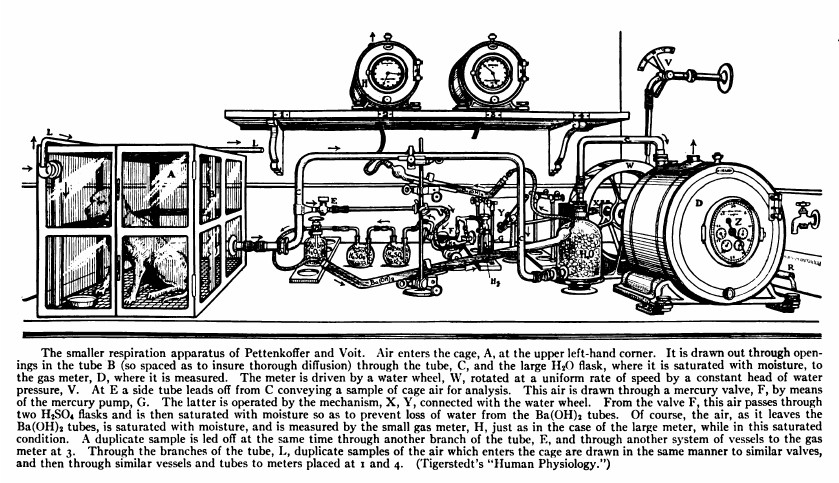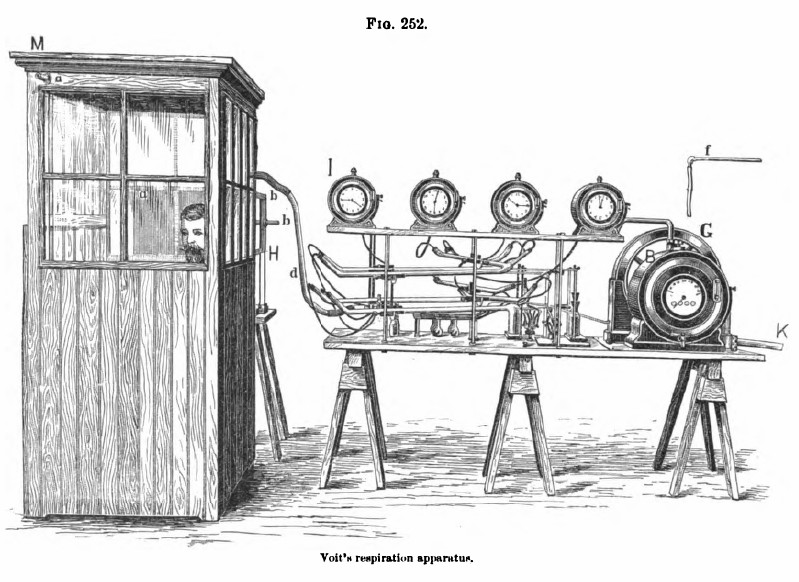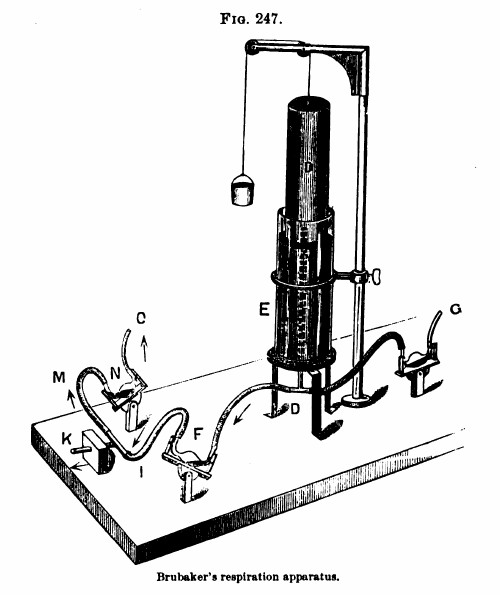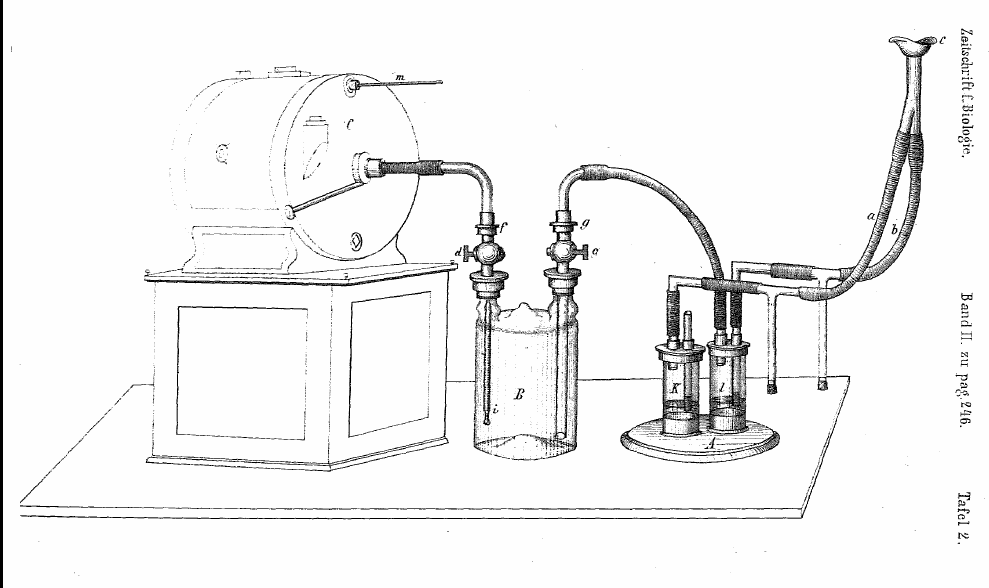From The Elements of the Science of Nutrition by Graham Lusk, published by W.B. Saunders, 1917. Unnumbered front page.
Tag Archives: Voit
Respiration Apparatus, Voit’s, 1887
From Treatise on human physiology by Henry Cadwalader Chapman, Published by Lea Brothers & Co, 1887, page 446.
“We therefore, usually determine at the same time the amount of carbonic acid and water exhaled by the system, and for this purpose we make use of Voit’s respiration apparatus. This consists, as constructed by C. Stollventner and Sohn of Munich (Fig. 252), of a chamber (H) in which the subject of the experiment, a large dog, for example, is placed; of a large drum, and pumps worked by a waterwheel for the production of a constant draught of fresh air through the apparatus; of bottles and tubes containing appropriate materials for the absorption of water and carbonic acid of the air surrounding the chamber, as well as that from within it; and of meters for registering the total amount of air that has passed through the chamber analyzed for comparison.”
Spirometer, Brubaker’s Respiration Apparatus, 1887
From Treatise on human physiology by Henry Cadwalader Chapman, Published by Lea Brothers & Co, 1887, page 433.
“In determining the amount of air inspired or expired by an animal in a given time, we make use of a convenient apparatus constructed for this purpose by Dr. A.P. Brubaker, and which, in principle, is essentially the same as that commonly known as Rosenthal’s apparatus. It consists of a small spirometer (Fig. 247), the internal cylinder or gasometer (D) having a capacity of 700 c. cm. (43 in.) and equipoised by a bag of shot. Through the under part of the outer cylinder (E), which is firmly cemented to the stand, passes a T-shaped tube (D) connected with the tubes and valves which transmit the air to and from the gasometer. To one end of the tube (K) passing from the mask closely fitting to the face of the animal is adapted a tube (I) for transmitting the air to be inspired, and to the other end the tube and valve (M N O) for carrying off the expired air. The valves (F N) just referred to, are the same as those used by Voit in his respiratory apparatus shortly to be described, and consist of oval glass bulbs containing mercury. It is evident that as long as these valves are in the position shown in Fig. 247 the air will only pass in the direction indicated by the arrows. By reversing the valves (F N) the expired air will return back to the spirometer, and so can be measured. In using the apparatus the gasometer must be first raised by the hand through the whole extent or to a given height, to volume of air entering being determined by the scale. As soon as the gasometer has descended by exhaustion of the air through the inspiration of the animal it must be raised again – this, if the observation is to last any length of time. By connecting the tube G with a suitable reservoir the animal can be made to breath any gas that is desired, and the amount inspired in a given time approximately determined, the fluid used in the spirometer will then depend upon the kind of gas.”
Respiration Apparatus, Voit and Pettenkofer, 1860’s
Basal Metabolism apparatus, 1866
From “Untersuchungen uber den Stoffverbrauch des normalen menschen” by Max von Pettenkofer and Carl Voit, published 1866, labeled page 246.
The illustration shows a mouthpiece attached to a pair of Muller valves. Exhaled air was directed through a chamber containing caustic soda (potassium hydroxide) which absorbed the exhaled carbon dioxide and from there to a precision gas meter. The CO2 absorbant was weighed after each experiment to determine how much carbon dioxide was absorbed. The gas meter allowed the CO2 output per minute to be determined.




